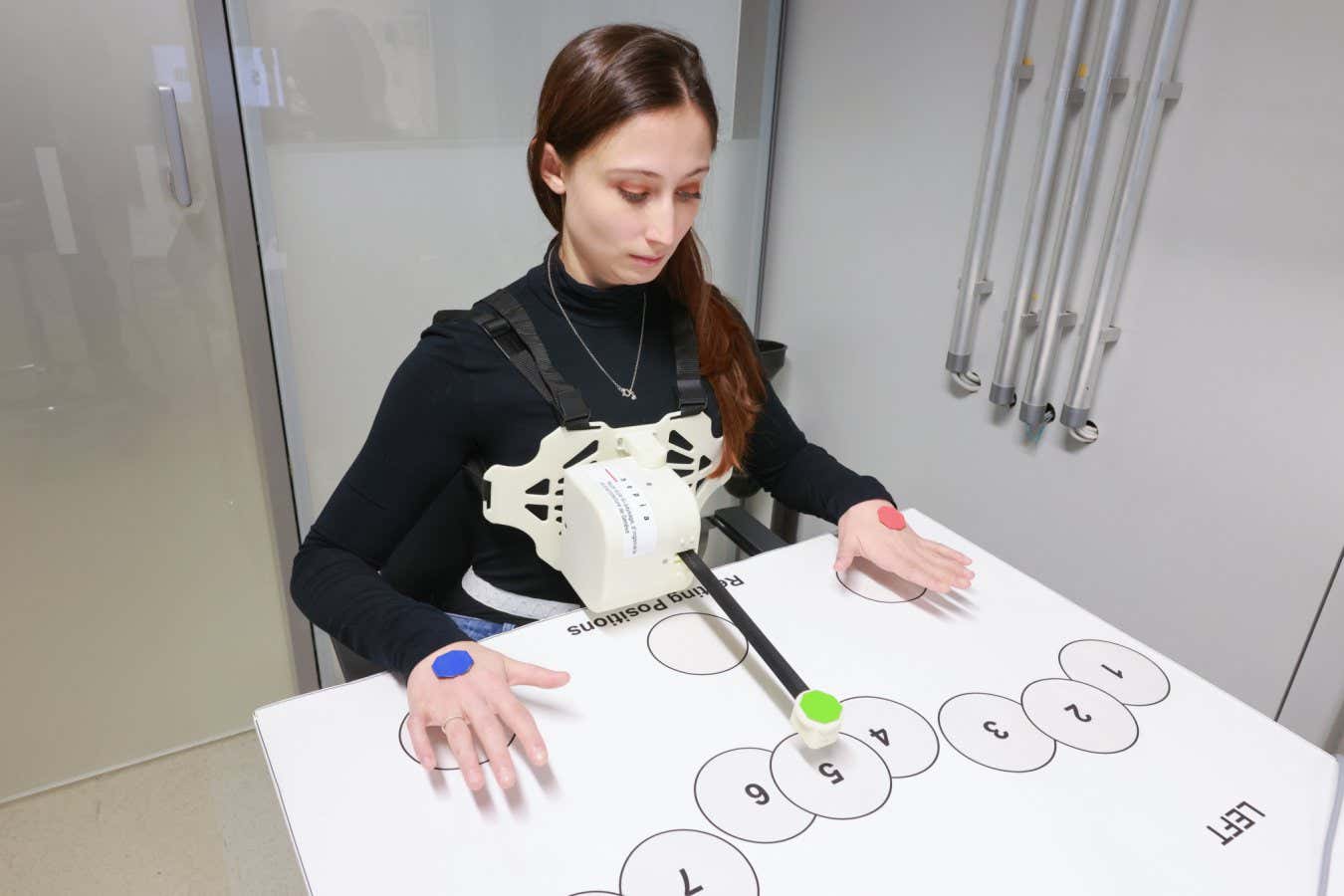

Researcher Martina Gini controls a simplified robotic arm with breathing
Alain Herzog/EPFL
People can learn to control a robotic third arm using their eyes and chest muscles. Such extra limbs could become essential tools for surgeons or people working in industrial jobs, say researchers.
Giulia Dominijanni at the Swiss Federal Institute of Technology Lausanne and her colleagues created real robotic third arms and virtual ones inside VR environments, all controlled by a combination of eye movements and diaphragm contractions. In tests, 65 volunteers were able to successfully carry out a range of tasks without interfering with their normal breathing, speech or vision.
Unlike prosthetics for people with amputated limbs, which can attach to a stump and use existing nerve connections to the brain, augmented devices require entirely new connections and are therefore more difficult to engineer, says Dominijanni. But the experiments show that peoples’ brains are capable of adapting to these devices and controlling them quite intuitively.
“I’m pretty good at it at this point,” she says. “It becomes very natural. I’m an engineer by training, and every time I have to solder, that’s pretty annoying; I would love to have something I could control and hold stuff in place.”
The team has also investigated controlling arms via vestigial ear muscles, which would have been used by our ancestors to pivot their ears for better hearing. These muscles could either replace the use of diaphragm control or supplement it. “Whether we could have four arms, so two extra arms, or one extra arm but with more degrees of freedom that we can control, is a matter of design,” says Dominijanni.
Developing ways for humans to use additional limbs could help industrial workers control machinery more easily and let search-and-rescue workers scour rubble and provide medical attention faster, she says. While they could also be used by the public in everyday tasks, they are likely to remain expensive gadgets akin to the VR goggles of today.
Topics: